Super Mario Odyssey is a very weird Mario game
30 minutes with Switch's next big hit.
The jewel of Nintendo's E3 2017 offering, Super Mario Odyssey feels in some ways similar to last year's star attraction, Zelda: Breath of the Wild. Odyssey is, like Zelda, a game about exploring - of wide, open landscapes seeded with subtle clues to secrets awaiting discovery. On foot, on horseback, on the back of a shield surfing down a ravine, Breath of the Wild's learning curve was smooth and inviting, its play space and possibilities laid out before your eyes from that first vista: the shrine you awoke in behind you, your ultimate goal of Hyrule Castle clear in the distance. Mario's journey feels a lot more experimental, and - on first impressions, at least - a tad trickier too.
Two of Odyssey's Kingdom worlds are on offer here at E3 - New Donk City, a mix of real-world New York and that of the original Donkey Kong arcade game, along with a more traditional Mario desert world which riffs heavily on the Mexican Day of the Dead. Arriving in each via Mario's new starship - shaped like a top hat - you'll find a specific goal highlighted via a pillar of light in the distance which will further the game's story. (A tuxedoed Bowser is organising a wedding for himself and Peach. The game's mini-bosses are his wedding planning firm.) How you get to that goal point and what you decide to do on the way is left up to you. Instead of a single reward or six objectives per area, each Kingdom offers around 30 smaller collectibles - Power Moons - which are required to power your spaceship. Some are rewarded for completing little side-quests, whereas others can be found hidden in simple environmental puzzles, similar to Breath of the Wild's Korok seeds.
Mario is joined on this adventure by Cappy, the seemingly self-aware hat with Rare-style googly eyes you'll have seen in previous footage. Cappy unlocks a new set of moves for Mario - it can be used as a boomerang-style weapon to throw out at enemies, or thrown and made to hover in place to act as a mid-air platform, bridging gaps too large for a standard jump. Another move lets you spin Cappy around Mario, knocking out anything within an ever-widening diameter. Finally, Cappy can be thrown and then directed - up, down, left or right - to target foes or objects like switches out of Mario's general reach. Pass a lamp post in New Donk City and want to ding its bulb to knock out a coin? You can send Cappy up there with a throw and a flick to collect the reward. Yes - a flick, of motion controls. And it's that motion moveset which really takes some getting used to.
I quickly found a groove long-jumping and rolling to explore each area, triple-jumping, or ground-pounding suspicious-looking objects for rewards, but I could do so because these were mechanics using buttons I've learnt before. Cappy's moveset still hadn't entirely clicked by the time the session was up. Perhaps it was simply the E3 demo experience, where neither of the two Kingdoms shown over the 30 minutes offered a tutorial. But the demo session was also set up so I played Odyssey with the Switch in its dock, on a TV screen with a Joy-Con in each hand, to encourage I learn Cappy's controls using motion gestures. These require you throw Cappy out with the Y button, then flick your wrist to direct the hat in a certain way, or jerk both hands to one side to activate Cappy's circular spin. I had to ask to find out the controls for the game's Switch handheld mode, or for use with the Switch Pro Controller - here, you can throw and direct Cappy using the left analogue stick, or quickly turn Mario himself on the spot and then hit throw to activate Cappy's spin move. These options will be available alongside motion controls while playing in docked mode, but it occurred to me that unless you ignored the gestures altogether, you would need to learn both sets of play styles to take advantage of Switch's main concept, and to play Odyssey in handheld mode while on the go.
It may seem a small issue to focus heavily on, but Odyssey's return to the open 3D environments of Mario 64 or Sunshine often requires precision platforming - undertaken in in far more diverse surroundings, where Mario's primary colour palette has been replaced by an alien New York cityscape. The task of learning and relying on motion controls which incorporate flicks in specific directions while simultaneously teetering on thin platforms, controlling both Mario himself and the game's camera, is something I'll need longer than 30 minutes of demo time to properly master. It's a curious design choice. Mario has had motion controls before, of course, with Super Mario Galaxy's gentle implementation. But Odyssey follows Super Mario 3D World, perhaps the apex of Nintendo's recent mission to make 3D Mario as accessible as possible to those more familiar with the side-scrolling New Super Mario series.
Odyssey takes this simplicity and turns it on its head - and the other story here is how much of a success it makes of that. Odyssey by name, Odyssey by nature - Mario is away from the Mushroom Kingdom and in foreign lands, the likes of which make for a startling transition. In a presentation before our gameplay session, director Kenta Motokura talked of how Odyssey's team had tried to keep interactive objects easy to understand even in the game's unusual surroundings - so collectible or positive power-ups should be inviting or shiny to look at, while things which might hurt Mario were kept spiky, or dangerous-looking. Still, nothing can prepare you for the first time you bounce off a New Donk City taxi bonnet and get catapulted into the air, or land on a very human-looking motorbike and suddenly find yourself speeding through traffic, Mario Kart style.
And the other side to Cappy is his other big function - the ability to capture a range of objects and enemies and possess them, so you are suddenly inside and piloting a Bullet Bill, using its flying capabilities to reach new areas. Hammer Bros can be possessed to let you throw ranged weapons, Cheep Cheep fish can let Mario swim underwater, Chain Chomps can break through blocks, tanks can let you fire cannons at aerial enemies, while strange new spider-like leggy enemies can spring Mario up to higher areas. Some of these are gameplay ideas the Mario series has explored before, often via the idea of various Mario suits. Having Mario take these abilities on with Cappy is a more immediate solution, and one which allows for a stream of constant gameplay changes more befitting longer sojourns in wider worlds.
And what worlds. New Donk City is all skyscrapers and verticality, its action split between street level and up on rooftops. There are numerous ways of getting from one to the other, jumping up or between towerblocks of various sizes - often with Cappy's help required. There are electric powerlines which Mario can travel down connecting rooftops or floating platforms, and off in the distance is that glowing goal point, where Mayor Pauline (yes, that Pauline) is waiting. Before there, though, lies back alleys with secret warp pipes behind dumpsters, humans playing jump-rope to befriend and join, and all sorts of other clues pointing to Power Moons I had to rush past to try and see everything.
Odyssey's riff on the Mexican Day of the Dead is more traditional Mario fare. Gone are the odd, faceless human inhabitants of New Donk City, replaced by more friendly, poncho-wearing skeleton pals beset by problems after Bowser swung through. Some of their friends are trapped in ice, a whole area has turned into quicksand, and there's a huge inverted pyramid to investigate. Each Kingdom has its own currency of coins, which can only be used in that respective land, as well as the Mushroom Kingdom's standard gold coin currency. These can be exchanged for costumes and other items in shops, bedecking Mario in various outfits which do not grant special powers but may unlock access to certain activities (ponchos and safari explorer costumes were stocked in the demo). You could also buy items such as stickers and statues for unknown purposes - which made me think perhaps they could be used to customise your starship (something which is still being kept under wraps).
The scope of Odyssey's overall size, its roster of alternative characters and what multiplayer options might still lie hidden are all questions for another day. For now, I'm still trying to digest what bits of Odyssey I did see, and how just a little more time with the game to master how it plays might make this Odyssey a little less daunting.
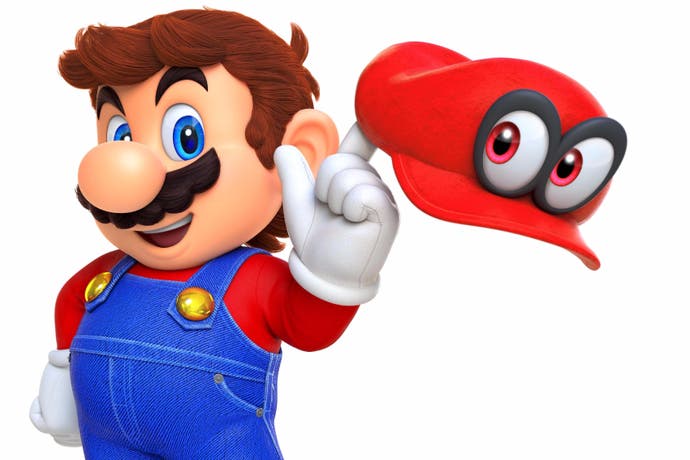







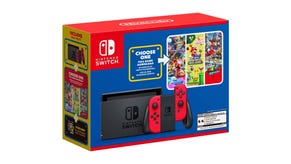
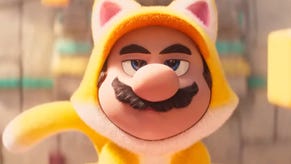
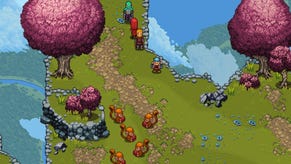
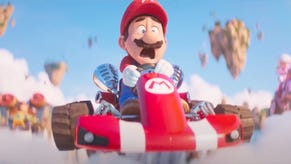



.png?width=291&height=164&fit=crop&quality=80&format=jpg&auto=webp)



